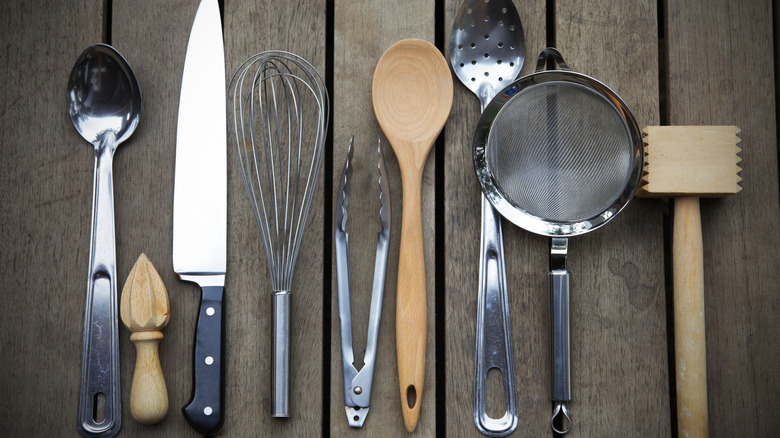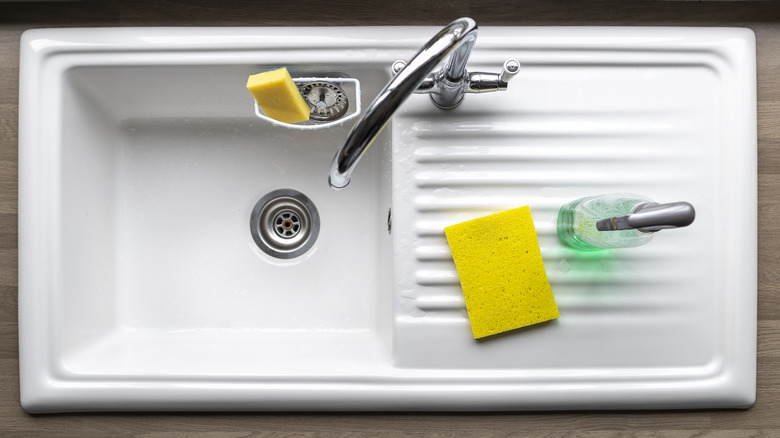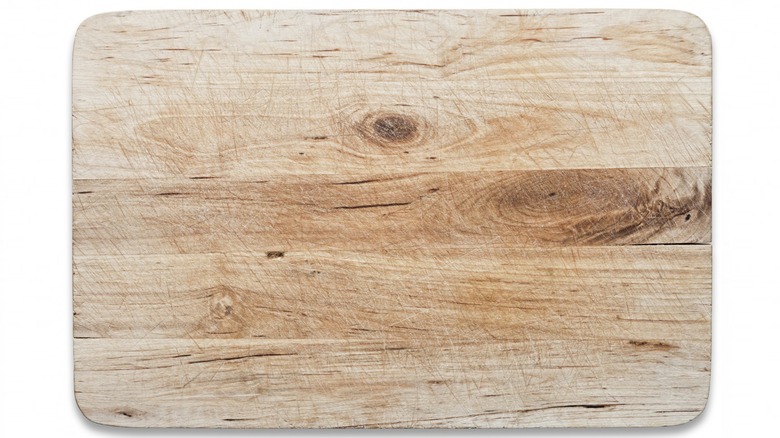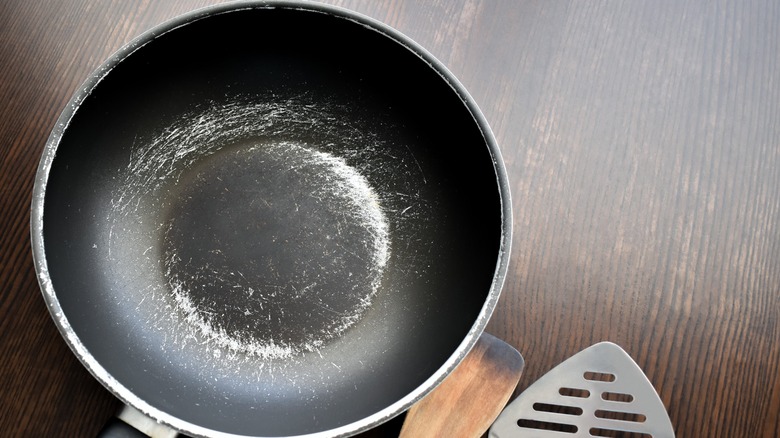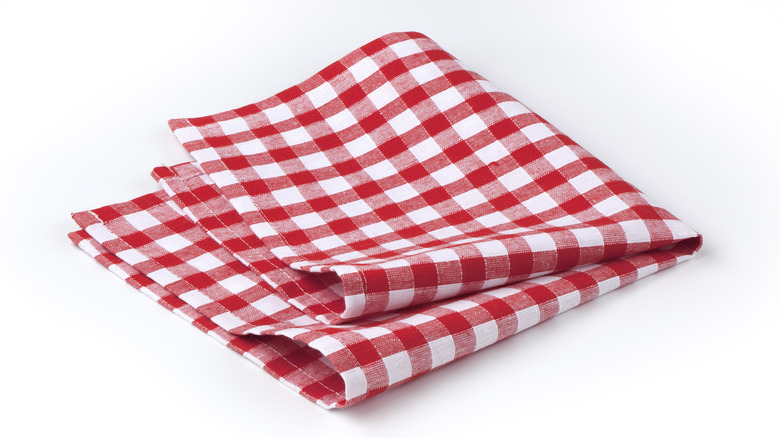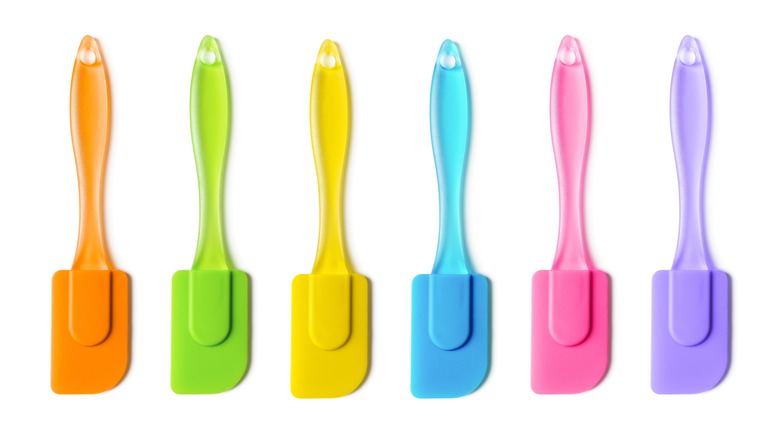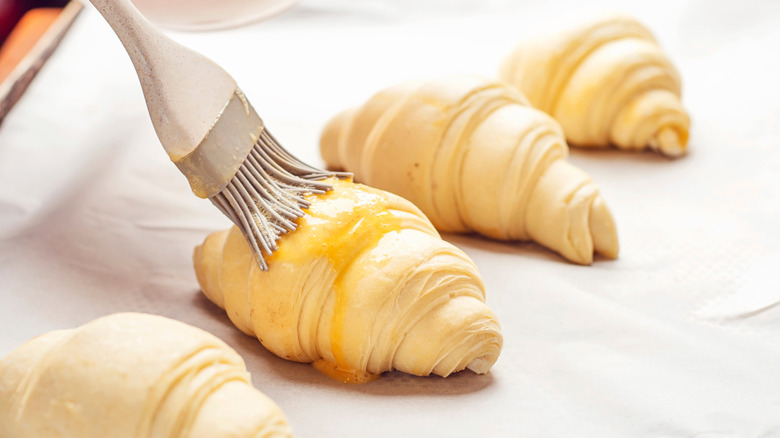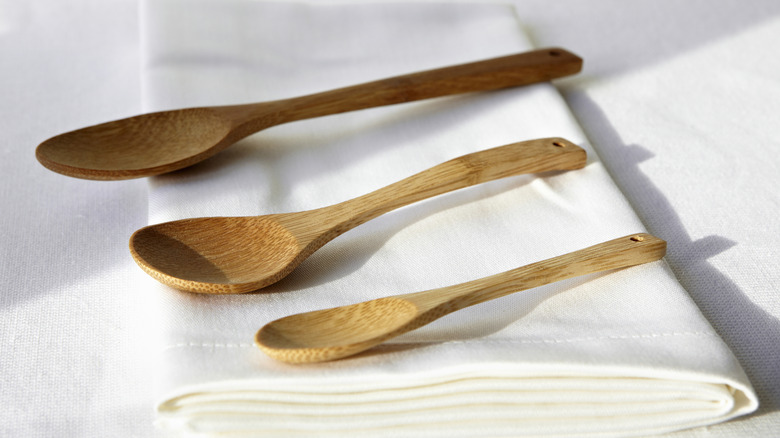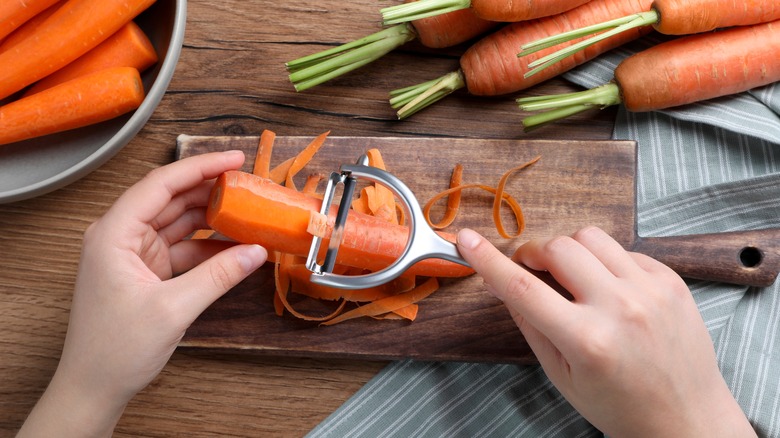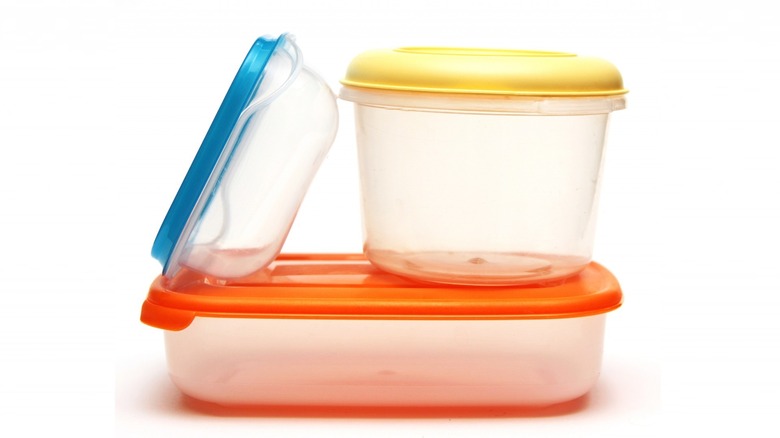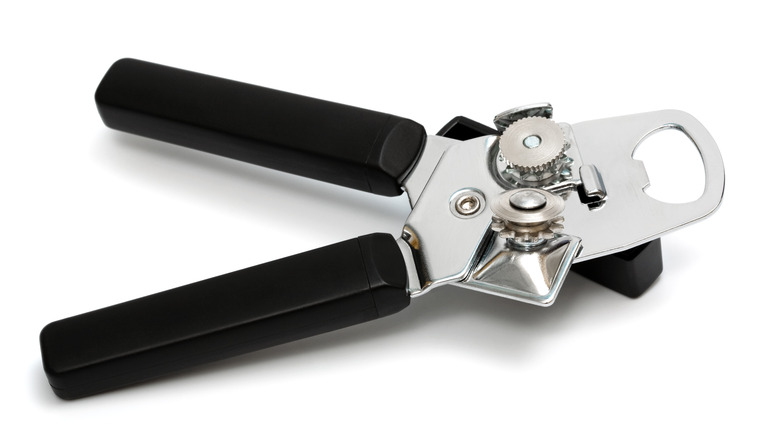10 Kitchen Tools You Should Be Replacing More Often Than You Realize
Whether it's due to unseen dangers like hidden bacteria or just gradual wear and tear, many kitchen tools will eventually no longer be sanitary or useful. There's a very good chance that you're unaware of how many tools in your kitchen right now are currently in questionable condition. Yet out of resourcefulness, many of us instinctively try to use the things we own until they're practically falling apart before we cough up more cash to buy replacements.
At a certain point, though, delaying the inevitable can come back to haunt you. Unsanitary surfaces and dulled blades are just the tip of the iceberg and can cause more serious problems down the line, like sickness and even potential injury. If you haven't taken a close look at the tools in your kitchen and been honest with yourself about whether or not they're past their prime, consider this as a sign. Here are 10 kitchen tools you should be replacing more often than you realize.
Sponges
To be honest, we prefer using brushes over sponges in the kitchen. Brushes do a better job of scrubbing and many of them come with a useful little scraper on the end. Brushes also dry easier and retain less moisture than sponges. In fact, studies show that brushes hold less harmful bacteria than sponges. Brushes also have a handle, so there's less direct contact with bacteria compared to sponges.
Still, if you feel an inexplicable devotion to Team Sponge, let it be known that a single sponge can hold a greater number of bacteria than the number of humans on Earth. In other words, if you absolutely insist on using sponges in your kitchen, it's highly advisable to throw them away after each use. That's because researchers have found that cleaning sponges is nearly futile; pretty much no amount of cleaning can truly rid sponges of the rapid bacterial growth taking place inside of them. Sponges are basically just absorbent petri dishes sinisterly masquerading as a viable cleaning option. If you aren't going to make the switch to brushes, then be sure to use new sponges on a daily basis.
Cutting boards
Cutting boards are one of the most highly-used items in a kitchen. Whether you're chopping up some fresh fruit for a healthy bowl of Greek yogurt and granola or carving into some juicy, roasted chicken for dinner, they're absolutely necessary. Using cutting boards will help preserve the sharpness of your knives, but at the same time, they also take the brunt of your blades and endure inevitable damage. A few scratches here and there may seem trivial, but they often worsen over time which leads to bigger issues.
As cuts deepen into grooves, they essentially transform into little valleys on the surface that can collect moisture. If cutting boards aren't thoroughly cleaned and totally dried, the moisture in those grooves can breed bacteria that can transfer onto your food. This bacterial growth can occur on various materials, whether you're using a cutting board made of wood or plastic. The bottom line is that if your cutting boards are scratched up (and especially if they have deeper gashes) it's probably best to thank them for their service and bid them farewell. If you tend to rely on the dishwasher a lot, it's a good idea to make sure that any new cutting boards are dishwasher-safe.
Nonstick pans
From whipping up fried eggs to making buttermilk pancakes, nonstick pans are a tool that every cook should always have in the kitchen. Because they're so convenient, nonstick pans tend to be frequently used, which often causes damage over time. Repeated washing, exposure to high temperatures, and the scraping of utensils eventually wears away at the pan's nonstick coating. Once the nonstick coating starts to strip away, that's where the problems really kick in. Food sticks to the surface of the pan and burns, causing a messy cleanup that needs to be scoured off — which can lead to a downward spiral of deeper damage to the coating. Even worse, once the nonstick coating wears off, microplastics and chemicals can be released into the food. These particular chemicals have been linked to liver disease and cancer. Despite this, many home cooks continue to use their scratched-up pans.
Many people treat nonstick pans like cast iron ones, holding onto them for decades as if they can last for generations. But the vast majority of nonstick pans are made with less resilient material and aren't designed to last that long. In fact, America's Test Kitchen recommends replacing your nonstick pans every five to seven years.
Dish towels
Be honest: How often are you washing your dish towels? From drying off dishes to cleaning up splatter on the stove or counter and other spills, dish towels always come in handy when preparing just about any meal. Because dish towels are used to soak up excess water and other liquids, the fabric in them is constantly exposed to moisture. If they're merely hung to dry after each use instead of being thoroughly washed and dried, the moisture in them most likely contains bacteria, including potentially dangerous kinds like salmonella, staphylococcus, and E. coli. When contaminated dish towels are reused and come into contact with other surfaces and food, bacteria can spread and cause sickness.
The USDA recommends changing dish towels on a daily basis. Of course, there's nothing wrong with properly washing dish towels and reusing them, but at a certain point, it's still probably a good idea to throw your old ones away and get a brand-new set. If the fabric becomes seriously stained or has picked up any weird smells that aren't washing out, it's definitely time to say goodbye.
Spatulas
If you cook on a regular basis, you probably have multiple spatulas on hand. Different dishes require different spatulas: A burger in a cast iron pan or on a griddle will need a metal spatula, while softer spatulas like silicone or nylon are better for more delicate foods in nonstick pans. The softer spatulas made with plastic tend to be the ones that need replacing, since the material can warp and melt when exposed to high temperatures.
Silicone can handle high temperatures up to around 600 degrees Fahrenheit, while nylon is less heat resistant and can only withstand temperatures up to 400 Fahrenheit. Once your spatulas start to crack or warp, it's a good idea to get rid of them, according to chef Kelsey Clark (via Real Simple). This is because any fissures in the plastic and rubber can harbor food debris and bacteria. Rather than continuing to use a dicey spatula that's been reduced to nothing more than a bacteria wand, it's probably best to just chuck it in the trash. The good news is that spatulas are often quite inexpensive, so replacing them shouldn't break the bank.
Pastry Brushes
Pastry brushes come in handy for spreading glazes or egg washes over fragile surfaces like soft breads. They're commonly made with silicone or with boar bristles, and each type has advantages and drawbacks. Silicone brushes are more heat-resistant, but their bristles are thicker and a little rougher. This makes them less delicate, which can end up affecting pastry presentation. Pastry brushes made with boar bristles have a much finer touch, but that finer touch comes at a price because they're also less resilient.
Over time, the bristles on a pastry brush made with boar bristles can become loosened. This can lead to bristles becoming detached from the brush and ending up in food. Imagine taking a buttery bite from a freshly-baked croissant, only to feel loose boar bristles between your teeth. That's definitely a quick way to ruin a meal. The bottom line: If the bristles on your pastry brush are becoming frayed and loose, do yourself a favor and score a new one before you regret it.
Wooden spoons
Similar to wooden cutting boards, wooden spoons can sustain some serious damage over the years. After long-term use, wooden spoons tend to crack or chip due to repeated exposure to high heat and from stirring or scraping harder surfaces like pots and pans. All of these imperfections in the wood create little hiding spots for water and food debris to collect, which can breed bacteria that may lead to sickness. Cleaning them incorrectly, by soaking them or putting them in a dishwasher, can damage them too, making them swell, warp, and crack as they take in too much water.
Using a beaten-up wooden spoon may feel frugal, but in the end, your health is worth more than the price of a replacement. Yet many people try to stretch the life of their wooden spoons to the limit. If yours is scarred enough to have some texture that can trap moisture, that's a good sign it's time to let it go. Honor its memory by thinking about all of the nourishment it's provided you over the years so you can move on with a sense of closure.
Vegetable peelers
If you want to make a big batch of creamy mashed potatoes, where would you be without your trusty vegetable peeler? These unassuming tools are another workhorse that makes life a little easier in the kitchen. The question of when to replace vegetable peelers is a little more ambiguous, since the use of this tool probably fluctuates more than something used for most meals like a pan or a spatula. Unlike knives, vegetable peelers are difficult to sharpen, so they're tough to fully resurrect once they enter a downward spiral of dullness.
Many tend to treat vegetable peelers like they have an infinite lifespan and hold onto them for years or even decades. So it may be surprising to learn that Ina Garten, chef and host of Food Network's Barefoot Contessa, actually recommends replacing vegetable peelers every year (or when the blade gets dull). Fortunately, like many of the other tools on this list, peelers tend to be fairly inexpensive, so getting a replacement shouldn't be too much trouble.
Storage containers
Storage containers are always useful for leftovers or for storing ready-to-eat snacks like fresh fruit, veggies, and sliced cheese. Most storage containers are either made of plastic or glass. While plastic is cheaper, it's also more flimsy and may contain BPA — an industrial chemical that's been linked to various cancers. If you're going to use plastic storage containers, it's a good idea to purchase plastic that's BPA-free, which is usually advertised on the packaging. To be honest, though, we'd advise switching from plastic storage containers to glass. Sure, glass containers are more expensive — but many of them are oven-safe, which means that you can slide food straight from the fridge into the oven for a hot meal without having to worry about weird chemicals in the plastic.
Plastic containers can also pick up stains or odors from storing food. If a storage container is stained, scratched, or still somehow smells like that batch of spaghetti carbonara you made a few months ago, it's time to treat yourself to an upgrade.
Manual can openers
It's easy to take can openers for granted, since they're a simple tool with a simple job. But imagine how frustrating and difficult it would be to pry into that sealed can of pinto beans without one. Can openers are a perfect example of how the right tool can transform an otherwise challenging job into a practically effortless task.
That said, can openers are certainly not impervious to the passage of time. Although traditional can openers can last for several years, the blades on them can gradually dull, making them much less effective as time goes on. Newer can openers tend to leave a smoother edge, which leads to less spillage/leakage during the opening process. If you're noticing that your can opener is struggling to get the job done, that's a good sign that it's ready to bite the dust. We prefer sticking with manual can openers, since they're easy to use and can function even if the power goes out. At the same time, electric can openers may be a good option for those who suffer from issues like arthritis. No matter which type you choose, just make sure to give it a clean after each use, since can openers tend to make contact with the food they're opening.
